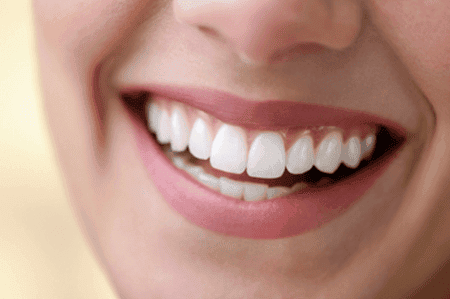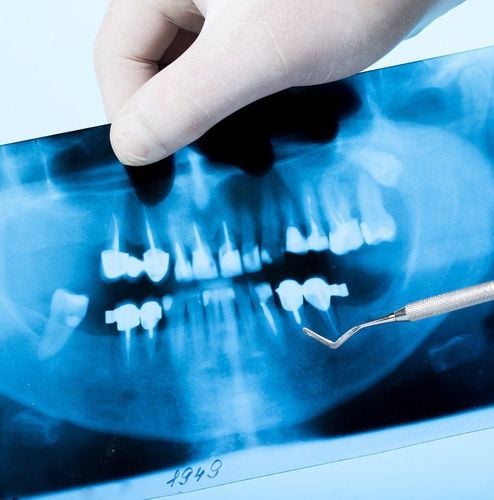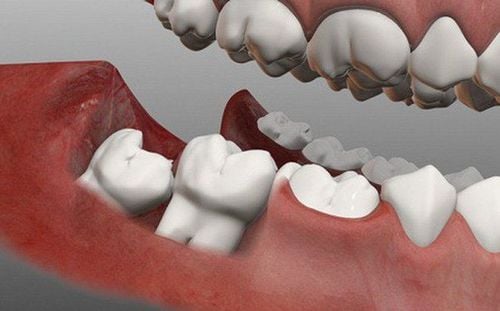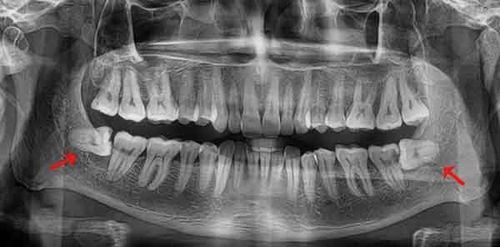This is an automatically translated article.
Wisdom teeth grow behind the upper and lower molars. In many cases, wisdom teeth often grow crooked, sideways or in other words, misaligned. When there are signs of wisdom teeth eruption, they can push on other teeth, causing wisdom tooth pain due to overload and misalignment of teeth, needing to remove wisdom teeth.
1. When do wisdom teeth come in?
“When do wisdom teeth come in” is a question many people ask because they do not appear at the same time as other teeth on the teeth in the first years of life.
Usually, wisdom teeth will appear no earlier than 15 years of age and traditional belief is that the name of this tooth symbolizes maturity. The majority of wisdom teeth eruption occurs by the age of 25, but there are exceptions as some patients actually notice signs of wisdom teeth eruption later.
2. Why is wisdom tooth extraction necessary?
Many patients choose to extract wisdom teeth when there are no signs of complications. The dentist will examine the growth of these teeth and decide if it is best to proceed with the wisdom tooth extraction process to proactively remove it early.
Some of the reasons that dentists consider removing wisdom teeth include:
The patient has wisdom tooth pain, irritation of surrounding tissues or signs of a cavity forming. Inability to clean food and bacteria regularly properly and thoroughly. Not enough space to accommodate all teeth, causing misalignment. Signs of impact can lead to damage to the surrounding roots. Uncomfortable contact with teeth or gums. Affects normal function.
3. Is wisdom tooth extraction necessary if there are no signs of wisdom teeth eruption?
Although the majority of patients with 3rd molars do not experience any pain or complications, everyone still needs to see their dentist regularly.
Because, it is difficult to realize that the tooth has only partially erupted and is at risk of infection. The risk of needing to have wisdom teeth removed increases with age, and most wisdom tooth extractions by the age of 30 will be less favorable. The teeth will attach more firmly to the jawbone and there is also a chance that the broken root will move into the sinuses. Therefore, it is advisable to have regular dental check-ups for prevention rather than waiting until there are signs of wisdom teeth eruption to see the dentist.
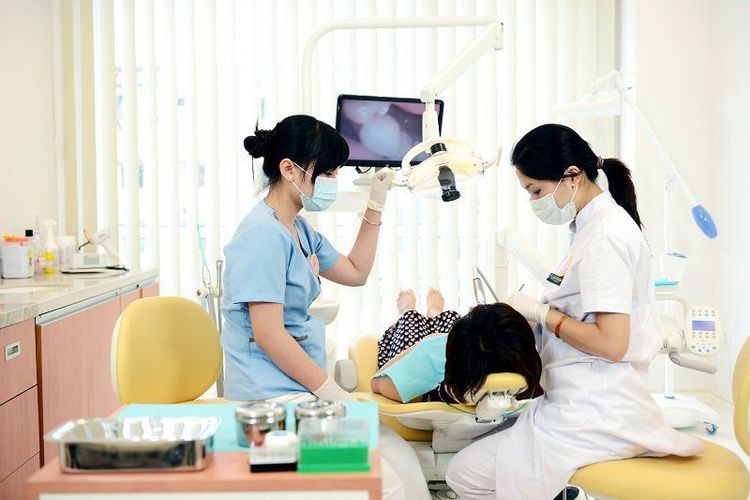
Bạn nên kiểm tra răng định kỳ để phòng ngừa.
4. What can happen if wisdom teeth have not been extracted?
People may not see a reason to have 3rd molars removed if they don't cause immediate problems but things can change over time. These teeth can be impacted or cause decay if there is not enough room for a thorough cleaning.
Besides, other teeth on the jaw can shift to accommodate the appearance of a new tooth and cause problems with bite adjustment. At this point, the dentist will determine whether extraction is necessary based on the evidence during the examination.
5. What risks can be encountered if wisdom teeth are not extracted?
People tend to overlook important health problems without facing real pain. Accordingly, unless otherwise specified by the dentist, the patient is usually carefully managed to remove wisdom teeth to avoid potential risks that can arise at any age:
Recurrent infections in surrounding soft tissues around. The cysts are filled with pus near the teeth. Onset of gum disease. Gradual caries 3rd or 2nd molars. Tumors, root abscesses.
6. How to manage wisdom tooth pain at home?
One of the most common remedies to reduce swelling that causes wisdom tooth pain while it is erupting is to gargle with salt water. This is a physiological saline solution to help keep the area clean, prevent infection, and not aggravate symptoms.
In addition, the patient should avoid chewing on the side of the teeth that are trying to grow and do not drink water, eat foods that are too hot or too cold. If the area starts to swell or feels irritated, an ice pack can be applied to the outside of the face if needed. Another wisdom tooth pain remedy that you can try at home is to apply a small amount of clove oil to a cotton ball before placing it on your teeth.
If wisdom tooth pain gets worse or you notice pus around the tooth, it's best to see your dentist urgently to start antibiotic treatment. It's not safe to remove wisdom teeth while they are infected, so ignoring the signs of wisdom teeth growth can delay necessary treatment steps.
7. Is it normal for the phenomenon of throbbing pain and accumulation of pus in partially erupted wisdom teeth?
Dentists call the pain and discharge of pus around a partially erupting wisdom tooth periodontitis. Although this is a common complication, it is a sign of an infection that should be treated by a highly qualified orthodontist. Teeth can be impacted and cause symptoms to deteriorate rapidly and require immediate medical attention from a dentist. Treatment is usually as simple as thorough cleaning and removing some tissue as needed.8. Why are wisdom teeth often misaligned?
The size of human teeth usually decreases gradually, leaving less space for the last four teeth to comfortably erupt into the correct position. For some patients, the wisdom teeth remain below the gum surface, but others notice the teeth begin to emerge despite the size restriction. Because there is not enough room to grow normally in the teeth, wisdom teeth often grow horizontally and cause misalignment.
9. What to do when the first signs of wisdom teeth appear?
The chance of infection is very high between the partially erupted tooth and the gum. Therefore, thorough cleaning of teeth after each meal is absolutely necessary to avoid complications. However, this is not always an easily accessible area. The risk increases with age because infections can become more common and the body is less able to heal itself. If the tooth is partially stuck below the gum line, this sign of wisdom teeth growth is very obvious that the wisdom tooth is misaligned. Therefore, it is better to have teeth removed at an early age than to deal with infections and toothaches.
Because it will be more difficult to clean wisdom teeth, there will be more plaque that leads to tooth decay. Furthermore, wisdom teeth filling is even more difficult if the teeth are growing at an uneven angle. In addition, when tooth decay occurs, the dentist will need to recommend tooth extraction to avoid the risk of damage to the adjacent 2nd molar.
10. What are the possible risks of wisdom tooth extraction surgery?
Nerve damage that causes changes in sensation in the tongue, lower lip, or chin. Sinus injury due to upper wisdom tooth extraction. Lower jaw bone weakens. Infection in the open fossa is caused by trapped food particles and bacteria. Pain and slow healing caused by a blood clot (dry spot) exposing the bone in the wound area. Because teeth will go through many changes throughout a person's life, the milestone of when wisdom teeth erupt is very important, a reminder of a certain daily oral care routine. When properly grown, the signs of wisdom teeth eruption are gentle and a healthy wisdom tooth can help you chew better. On the contrary, if you have wisdom tooth pain, go to your dentist early to get wisdom teeth removed in time, before causing complications.
Please dial HOTLINE for more information or register for an appointment HERE. Download MyVinmec app to make appointments faster and to manage your bookings easily.
Reference articles: webmd.com, tandaradental.com.au, supremiadentistry.com, drdavidcote.com, greenmeadowdental.com, hoangmysaigonclinic.com




